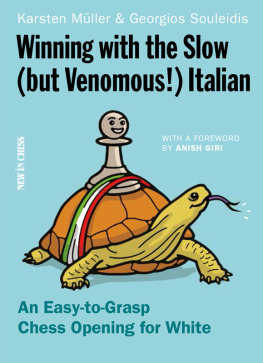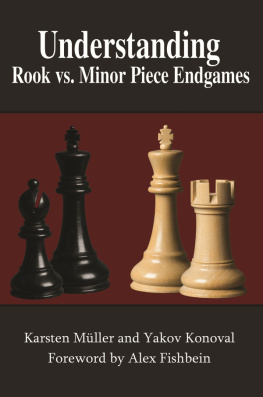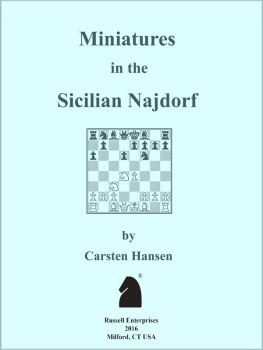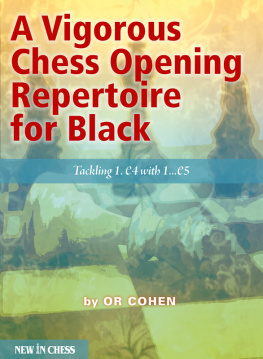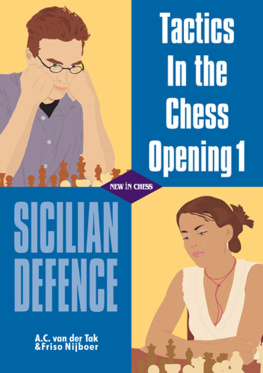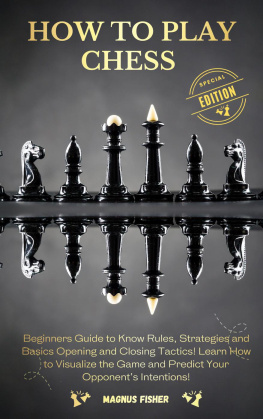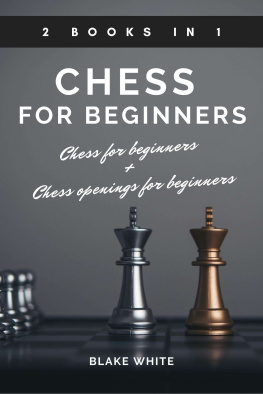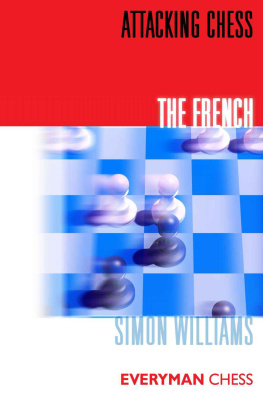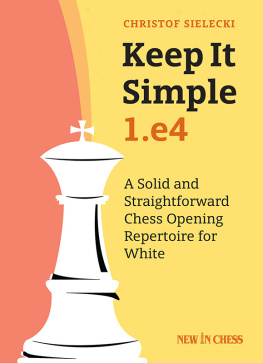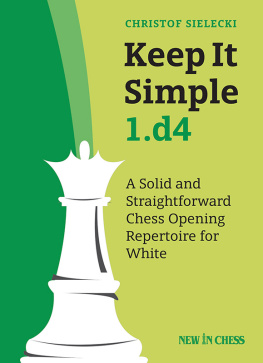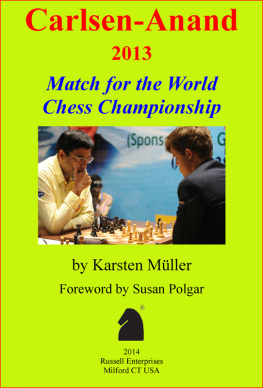Karsten Mller & Georgios SouleidisWinning with the Slow (but Venomous!) Italian An Easy-to-Grasp Chess Opening for White New in Chess 2016 2016 New In Chess Published by New In Chess, Alkmaar, The Netherlands
www.newinchess.com All rights reserved. No part of this book may be reproduced, stored in a retrieval system or transmitted in any form or by any means, electronic, mechanical, photocopying, recording or otherwise, without the prior written permission from the publisher. Cover design: Volken Beck Supervision: Peter Boel Proofreading: Ian Kingston, Frank Erwich Production: Ian Kingston Have you found any errors in this book? Please send your remarks to and implement them in a possible next edition. ISBN: 978-90-5691-674-9 Explanation of symbolsThe chessboard with its coordinates:
 | White to move |
 | Black to move |
| King |
| Queen |
| Rook |
| Bishop |
| Knight |
 | White stands slightly better |
 | Black stands slightly better |
 | White stands better |
 | Black stands better |
| + | White has a decisive advantage |
| + | Black has a decisive advantage |
| = | balanced position |
| the position is unclear |
 | with compensation for the material |
| ! | good move |
| !! | excellent move |
| ? | bad move |
| ?? | blunder |
| !? | interesting move |
| ?! | dubious move |
 | with counterplay |
 | with attack |
 | with initiative |
| # | mate |
Foreword by Anish Giri The opening is the only part of the game that one can predict and plan, so it is no wonder that this aspect of the game fascinates many chess players of all levels and ages. Winning the game with the white pieces straight out of the opening by just memorizing a sequence of moves, as tempting as it sounds, only happens in fairy tales (or in some of my games, but I do this for a living, so dont try this at home). More and more players have realized that the way to approach their White repertoire is to find an opening where the plans are simple, yet harmonious, and the main focus of the game shifts onto the middlegame, the phase where the sharper mind prevails.
This, however, is easier said than done. The imaginary tree of openings, expanding on a daily basis with more and more theoretically relevant games pouring in, is hard to navigate; the options are limitless and for every move you make with White there are five alternatives you have to be prepared for. One easy, yet prideful way out of this opening carousel, or madhouse, if you wish, is the Italian Game, or the Giuoco Piano the so called Quiet Game. The first ten to fifteen moves are clear (as Karsten and Georgios explain in the very first pages of this book), yet even the strongest players have failed to navigate the labyrinths of this crystal-clear opening. Behind the apparent clarity and simplicity there is a layer of move-order subtleties and nuances that you dont necessarily have to know, but that you may eventually stumble upon anyway. I have little doubt that the variations in this book are neither complete nor faultless and some of the evaluations are to be doubted.
Some, checked under the careful microscope of serious hardware and software, can and probably will be proven over-optimistic for White, and in extreme cases may even be blatantly wrong. But the basic principles, the plans and the concepts as well as the model games offered in this book will help many ambitious chess lovers come closer to understanding the subtleties of this quiet yet fascinating opening. Personally, I have played many successful games with the Italian Game in games with shorter time controls, but also in some longer and more important games. In the recent Candidates Tournament in Moscow I used it to outwit Hikaru Nakamura, and although he later escaped, Pavel Eljanov, the first player I played after the Candidates tournament, didnt. Hopefully there will be many more victories in the Italian Game for me and for the readers of this book, too. Anish Giri
June 2016Preface Any 1.e4 player knows the problem that 1e5 is hard to meet and to beat.
The Spanish or Ruy Lopez opening is not easy to learn, as Black has so many options to deal with it. So why not choose the Italian Opening, which also is very old and can lead to similar structures? We admit that 3.b5 exerts more direct pressure, but it also gives Black more options. The slow Italian with c2-c3 and d2-d3, with the idea of following up later with d3-d4, preserves Whites initiative and is not easy to deal with. Black has several options, but does not really have an easy life, as White can often press on until the endgame. Therefore we have also included typical strategies and endgames, and last but not least tactical exercises. We recommend a schematic set-up plan in Ruy Lopez style with 0-0, b1-d2-f1-g3(-f5), e1, h2-h3, and d3-d4, and if d6-d5 then exd5, but as usual you need to know a few move order details not to be outsmarted.
White can of course also use other set-ups, which we mention briefly as well. For example, the modern trend to play a2-a4 early, with one idea being to follow up with b1-a3, is also looked at. Other White move orders and concepts are also briefly described in Chapter 9. We have unified the move orders according to our repertoire suggestions. We would like to thank Jonas Lampert and Ufuk Tuncer for ideas, suggestions and analytical corrections, Allard Hoogland and Peter Boel of New in Chess for their good cooperation, Anton Schermer, Frank Erwich and Ian Kingston for the excellent layout, and last but not least super-grandmaster Anish Giri for his foreword. Karsten Mller and Georgios Souleidis,
Hamburg 2016Introduction As an 1.e4 player I struggled for a long time in my career with what to play against 1e5.
As I am not the most hard-working guy in the world I always refused to study the massive amount of theory in the Ruy Lopez. Instead, I tried nearly every other possibility to encounter 1e5, including dubious stuff like 2.d4 and a gambit that Id prefer not to name. At some point I realised that I would have to try the Italian Game. Previously I thought that this was one of the most boring openings in chess history and that it would not be easy to win with it, but to my surprise I started to win game after game, even against stronger opponents, and without studying too much theory. Actually, this should not come as a shock because the Italian Game is a very natural opening and it is no surprise that it was one of the first openings played in chess history. White develops his pieces in a very natural way and brings the king into safety.
Next page
